


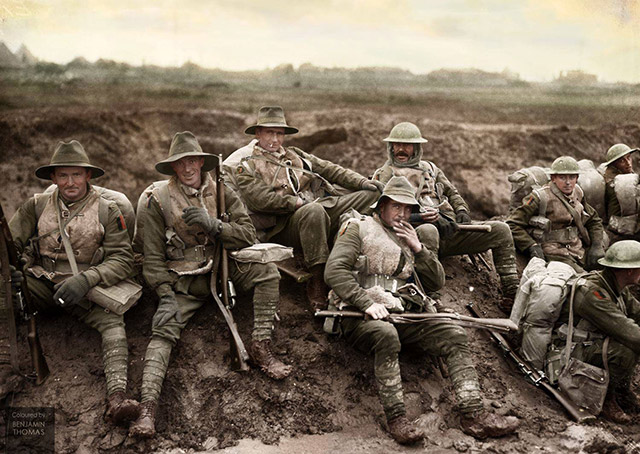
Source: ANZAC Centenary Queensland
The Western Front, a 400-plus mile stretch of land weaving through France and Belgium from the Swiss border to the North Sea, was the decisive front during the First World War. Whichever side won there – either the Central Powers or the Entente – would be able to claim victory for their respective alliance. Despite the global nature of the conflict, much of the world remembers the First World War through the lens of the Western Front. Read through the resources below to learn more about this theatre of war.
This website links to a number of great primary sources about the Western Front and is a great place for further research.
This website has a list of all the battles of the Western Front, with links to study resources about each battle.
The Western Front Campaign is often said to be one of the darkest periods of the First World War. In March 1916, after Gallipoli, the ANZACs (Australian and New Zealand Army Corps) were sent to France to the conflict on the Western Front, where the war was bogged down in trenches and mud. Read through this resource to learn more.
Over 295,000 Australians served on the Western Front between March 1916 and November 1918. Of those service men and women, 46,000 lost their lives and over 130,000 were wounded. Battle conditions were so dire that more than 18,000 of the fallen had no known grave. Read through this website to learn more.
The Western Front, which ran across the industrial regions of France and Belgium, was one of the most important battlegrounds during the First World War. It is where great battles were fought and where more than 295,000 Australians served between March 1916 and November 1918. Read through this website to learn more.
The Western Front was a meandering 700-kilometre frontline, running from the North Sea coastline to the Swiss border and passing through (at various times) Belgium, north-eastern France and southern Germany. It was the main theatre of fighting in World War I and was the location of several major battles, including the Somme, Verdun and Passchendaele. Read through this website to learn more.
This website is an interactive guide to life serving on the Western Front and is a great place to start your research.
One of the Australian War Memorial’s most important films – the most accurate filmed record of the Battle of Pozières in 1916.

In a war known for its brutality, the Battle of Verdun, (February 21–December 18, 1916), was among the longest and most bloody conflicts of World War One. However, no Australians were involved in this battle.
The Battle of Verdun, 21 February-15 December 1916, became the longest battle in modern history. It was originally planned by the German Chief of General Staff, Erich von Falkenhayn to secure victory for Germany on the Western Front. The aim was to crush the French army before the Allies grew in strength through the full deployment of British forces. Without France’s ninety-six divisions the Allies would be unable to continue fighting in the west. Read through this website to learn more.
Verdun. Alongside the Somme, the name of the fortress town in eastern France is synonymous with the worst horrors of World War One. The endless rows of white crosses that now cover the area are testament to the war’s longest and hardest-fought battle which lasted 10 months, from 21 February – 18 December 1916. Just why was it so important that the French were successful in the Battle of Verdun, and what strategic implications did this have for the rest of the war? Read this article to find out.
A timeline of the Battle of Verdun, which lasted for 303 days between February and December 1916 and became the longest and one of the most costly battles in human history.
The Battle of Verdun was fought during World War I (1914-1918) and lasted from February 21, 1916 until December 18, 1916. The longest and largest battle fought on the Western Front during the conflict, Verdun saw German forces attempt to gain the high ground around the city while drawing the French reserves into a battle of annihilation. Striking on February 21, the Germans made early gains until increasing French resistance and the arrival of reinforcements turned the battle into a grinding, bloody affair. Fighting continued through the summer and saw the French commence counterattacks in August. This was followed by a major counteroffensive on October which ultimately reclaimed much of the ground lost earlier in the year to the Germans. Ending in December, the Battle of Verdun soon became an iconic symbol of French resolve to defend their country. Read through this article to learn more.
The Battle of Fromelles on 19–20 July 1916 was the first occasion on which the First Australian Imperial Force (AIF) saw action on the Western Front. The battle is widely regarded as a disaster for the Allies, and has been described as "the worst 24 hours in Australia's entire history." Read through the resources below to learn more about this Battle.
The battle of Fromelles on 19 July 1916 was a bloody initiation for Australian soldiers to warfare on the Western Front. Soldiers of the newly arrived 5th Australian Division, together with the British 61st Division, were ordered to attack strongly fortified German front line positions near the Aubers Ridge in French Flanders. The attack was intended as a feint to hold German reserves from moving south to the Somme where a large Allied offensive had begun on 1 July. The feint was a disastrous failure. Read through this website to learn more.
Read through this website to get a short summary of the Battle and Fromelles and look through a curated gallery of photos of the battle.
The diversionary attack on German positions at Fromelles was the first major battle fought by Australian troops on the Western Front. It was planned to stop the Germans from reinforcing their unit on the Somme, where the Allies had launched a major offensive earlier that month. The feint was unsuccessful. The attack was a disaster for the British and the worst 24 hours in Australian military history. Australia suffered over 5500 casualties in a night, almost equivalent to the country's combined losses in the Second South African (Boer) War, Korean War and Vietnam War. Read through this website to learn more.
In July 1916, the battles of Fromelles and Pozières marked Australia's entry onto the Western Front of the Great War. These were two of many battles fought during the Somme Offensive, in which for nearly half of 1916, British and its Dominion's soldiers fought alongside their French Allies, in a bid to break through the German's entrenched positions to the north and south of the Somme River. The battles of the Somme were a turning point in the First World War. They forced a German retreat and ensured that from the end of 1916, until March 1918, Germany remained on the defensive along the Western Front. Read through this website and watch the videos to learn more.
This publication is a part of the series; Australians on the Western Front 1916-1918. The focus is on the midpoint of the Great War and the arrival of the First Australian divisions in France.
The First Battle of the Somme took place July 1–November 13, 1916, during World War I. It was a costly and largely unsuccessful Allied offensive on the Western Front. The horrific bloodshed on the first day of the battle became a metaphor for futile and indiscriminate slaughter. Read through the resources below to learn more about this battle.
The Battle of the Somme is one of the most infamous battles of the First World War. The battle took place between 1 July and 18 November, 1916. After 18 months of deadlock in the trenches on the Western Front, the Allies wanted to achieve a decisive victory. In 1915, a plan was finalised for a joint British and French offensive the following year. However, the German attack against the French at Verdun meant that the British were forced to take the lead. The plan for the Somme was devised by Sir Douglas Haig and Sir Henry Rawlinson. The huge casualties suffered during the Battle of the Somme played a significant part in earning Haig the nickname 'The Butcher'. Here are 5 facts about the Battle of the Somme.
The 1916 Somme offensive was one of the largest and bloodiest battles of the First World War (1914-18). The opening day of the attack, 1 July 1916, saw the British Army sustain 57,000 casualties, the bloodiest day in its history. The campaign finally ended in mid-November after an agonising five-month struggle that failed to secure a breakthrough. Read through this website to learn more.
The Battle of the Somme began on July 1st 1916. Lasting 141 days it was one of the longest continuous battles of the First World War. British forces along with those from France and the British Empire intended to relieve pressure on French troops at Verdun. Another objective was to inflict as much damage as possible on the Germans. The Allies had also agreed to launch offensives on several fronts against the Central Powers. The first day of the Battle of the Somme is remembered due to the heavy casualties suffered by the British Army, 57470 killed, wounded or captured. Given the objectives were to relieve pressure and inflict damage it is hard to assess who won the Battle of the Somme. Read through this website and see if you can decide.
The Somme offensive, also known as the battle of the Somme, is the term given to series of battles fought between 1 July and 18 November 1916 along the Somme Valley in France. It was the main Anglo-French offensive of 1916 and was originally planned as part of a wider strategy of attacking Germany simultaneously on the Western and Eastern Fronts, with the aim of destroying Germany's reserves of manpower. Read through this website to learn more.
The Battle of Passchendaele (July 31–November 6, 1917), World War I battle that embodied the senseless slaughter of the Western Front. The third and longest battle to take place at the Belgian city of Ypres, Passchendaele was ostensibly an Allied victory, but it was achieved at enormous cost for a piece of ground that would be vacated the following year. Read through the resources below to read more.
On 31 July 1917, the British and French launched a massive offensive in the area around Ypres in the Belgian province of Flanders. The Third Battle of Ypres, known in later years as Passchendaele, was not as bloody as the Somme the year before, but would achieve its own notoriety. Read through this article to learn more.
After mid-1917, and following mutinies in the over-strained French Army, the British Forces had to assume an even greater role in the war on the Western Front. For Field Marshal Sir Douglas Haig, the British commander-in-chief, this provided an opportunity to launch an offensive that he had long wanted. Attacking from Ypres in Belgium, he planned to drive the Germans from the surrounding dominant ridges and even hoped to reach the Belgian coast. Following on the success at Messines in June, he unleashed his great attack on 31 July 1917. Fighting went on, often in appalling weather and despite crippling losses, until November. Finally, with the army stuck in muddy fields churned up by the artillery fire, the bloody offensive came to an untidy close. Many would afterwards call this offensive, actually a series of battles, after the name of the village that had become the last objective – 'Passchendaele'. Read through this article to learn more.
The Third Battle of Ypres - also known as Passchendaele - has shaped perceptions of the First World War on the Western Front. Fought between July and November 1917, both sides suffered heavy casualties and endured appalling conditions. The name Passchendaele has become synonymous with mud, blood and futility. Read through this website to learn more.
This website includes excerpts from first hand accounts from Passchendaele and lots of great images.
The Third Battle of Ypres, better known as Passchendaele after the devastated village that was the final objective of the campaign, was a series of battles between July and November 1917. Passchendaele was the second largest battle fought by Allied forces during the war and involved Australian, Belgian, British, New Zealand, South African, Indian and Canadian troops. Read through this article to learn more.
As part of the German Spring Offensive on the Western Front German forces using infantry and tanks captured Villers-Bretonneux (near Amiens) from exhausted British defenders on 24 April 1918. The Australian 13th and 15th Brigades were brought forward and in a model of a well planned and co-ordinated night attack successfully recaptured the town. Villers-Bretonneux was a great victory for the Australian forces and forged long-lasting ties between Australia and France. Read through the resources below to learn more.
On 21 March 1918, reinforced with divisions from the Eastern Front, the Germans launched a great offensive against the British forces which withdrew across the 1916 Somme battlefield towards the major city of Amiens. The Australian units were hurried south to help hold back the German advance north of the Somme at Dernancourt and Morlancourt. Read through this website to get a brief overview of the battle.
When a massive German offensive swept across northern France in March 1918, it seemed for a time that German troops might reach the Channel coast. The Australian Corps, most of whose infantry was concentrated in the area around Messines in Flanders, was spared the bloody fighting of the offensive’s opening days but was soon sent south to plug gaps in the disintegrating British line. Read through this website to learn more.
After the March offensive was launched, German forces continued to push on to Villers-Bretonneux. Instructed to halt this advance, and to replace the badly divided and depleted British forces, Australian troops were commanded to take position and to protect the vital areas of Dernancourt and Villers-Bretonneux from German capture. Read through this website to learn more.
This publication is a part of the series; the Australians on the Western Front 1916-1918. It highlights the war effort of the Australian Imperial Force (the 'AIF') in 1918. Few then understood how long this conflict would last, and how many would die.
The Villers-Bretonneux School Photograph Collection features items of various formats that document the role of the Victorian Department of Education and the school children of Victoria in the rebuilding of the school at Villers-Bretonneux, France after its destruction in 1918 during World War 1.
The battle of Villers-Bretonneux in France, and the subsequent pushing back of German forces, has been described as a crucial turning point in World War I. Two Australian brigades took part in the counter-attack to stop the German spring offensive on the night of April 24 in 1918, along with three British battalions. Read through this article to learn more about the event and the role it plays in Australia's national identity.
The French town of Villers-Bretonneux lies just south of the River Somme, set in wide, green fields, its church steeple clearly visible far and wide. Like many towns and villages on the Somme, it was beautiful, but of little significance to Australia, until the savage events of the Great War. Like many villages in the area, the war reduced Villers-Bretonneux to little more than rubble and marked a moment in history when a special link was forged between that corner of France and the land down under. Read through this article to learn more.
This website describes the Villers-Bretonneux Memorial. It commemorates all of the Australian soldiers who fought in France and Flanders from 1916 to 1918 during the Great War of 1914-1918. The Memorial serves also as a place of commemoration for those who died, and most particularly it is the place where all the names of those Australian officers and men who were killed in action in France and who have no known grave are commemorated. It is a great example of how war is remembered and the international ties that were forged in World War One.
The Battle of St. Quentin was a pivotal battle of World War I that began on 29 September 1918 and involved British, Australian and American forces operating as part of the British Fourth Army under the overall command of General Sir Henry Rawlinson. It opened up a gap in the Hindenberg Line and signalled the beginning of the end for the German forces. Read through the resources below to learn more.
This website provides a brief overview of the battle and includes a collection of primary sources that will be useful for further research.
The taking of Mont St Quentin and Péronne is regarded as among the finest Australian feats on the Western Front and the intensity of the action is evident from the fact that eight Victoria Crosses were awarded to Australians between 31 August and 2 September 1918. Read through this website to learn more.
The St Quentin Canal had been incorporated within the defences of the German held Hindenburg Line. Known as the ‘Siegfried Stellung’ to its German defenders it was considered an impregnable series of fortified redoubts, machine gun positions and fields of thick wire entanglements, ten miles deep and measuring a distance of forty miles from Cambrai to Le Fère. The St. Quentin Canal sector of the Hindenburg Line was regarded to be the most strongly defended section and the audacious operation launched by the 137th Brigade, 46th Division to assault and capture it on 29 September 1918 was considered to be a suicide mission. Read through this article to learn more.


This official photograph shows a soldier from the York and Lancaster regiment in a front line trench. It was taken by Second Lieutenant Davis McLellan on 6 February 1918 near Cambrin, in France. Trench warfare led to large periods of boredom, but even in the static conditions of trench warfare there was a constant threat from random shelling and snipers on both sides.

This personal photograph was taken by Robert Cotton Money on 7 December 1914. It shows the crew of an 18-pounder Field Gun in a gun emplacement on the Armentieres sector of the front line, in France. Artillery was a crucial part of the war. Most of the wounds soldiers suffered were caused by exploding shells. Whenever infantry crossed no man’s land, they relied on artillery for support. In the first year of the war artillery shells were in short supply. Only from the end of 1915 were guns able to fire heavy and sustained bombardments.

Before the first day of the battle on 1 July 1916, a week long bombardment of artillery fire from Allied guns was supposed to break the German defences. Over 1,700,000 shells were fired but the guns were too spread out to be really effective and many shells didn’t explode. This photograph shows a 15 inch howitzer being prepared for firing.

The second phase of the Somme offensive began on 14 July 1916 with The Battle of Bazentin Ridge. At first, this battle was a considerable success for the Allies, however as German opposition intensified the stalemate resumed. This photograph was taken by Lieutenant John Warwick Brooke and shows a long line of German prisoners being marched into Fricourt in France.

The Battle of the Somme continued until 18 November 1918 when it was finally called off. Although the Allies only advanced five miles, they learnt valuable lessons in how to fight the war and introduced new weapons. This photograph, taken by Lieutenant John Warwick Brooke, shows a Lewis light machine gun in use in a front line trench near Ovillers, in France, which proved its effectiveness during the battle.

On 31 July 1917 Britain launched a major offensive at Ypres which is often called the Battle of Passchendaele after the Belgian village where the battle ended four months later. The initial bombardment destroyed the drainage of the battlefield so when it started to rain heavily on the first day, the battlefield turned into liquid mud, which made conditions very difficult. This photograph, taken by Lieutenant John Warwick Brooke on 1 August 1917, shows a team of stretcher bearers struggling through deep mud to carry a wounded man to safety near Boesinge.

The mud was not just a problem for the soldiers taking part in the battle. This photograph was taken by Lieutenant John Warwick Brooke and shows two pack horses struggling through the mud near Ypres on 1 August 1917. During the First World War horses were crucial for transportation, as they could be relied on to get food and equipment to the front line. Horses pulled ambulances and guns and carried other heavy loads, like those shown here. Around eight million horses from all sides died during the war. Other animals used on the fronts included dogs, mules and pigeons.

During September 1917, the weather conditions improved and the Allies were able to push forwards. This photograph, taken by Lieutenant Ernest Brooks, shows German prisoners being marched through the Cathedral Square in Ypres, during the Battle of the Menin Road Ridge on 20 September 1917. The ruins of the 13th century cloth hall can be seen in the background.

The gains made during September encouraged the Allies to continue the offensive, but the bad weather returned and further attacks in October failed to make much progress. This photograph shows men of the 16th Canadian Machine Gun Company holding the line in a landscape of mud and water-filled shell holes, in November 1917. The eventual capture of what little remained of Passchendaele village on top of the ridge by British and Canadian forces on 6 November finally allowed the offensive to be stopped in a position that could be defended over the winter.

The heavy fighting and difficult conditions during the fighting at Ypres in 1917 led to heavy casualties for both sides. Over four months there were 325,000 Allied and 260,000 German casualties. This photograph shows the scene inside an Australian advanced dressing station on the Menin Road on 20 September 1917.
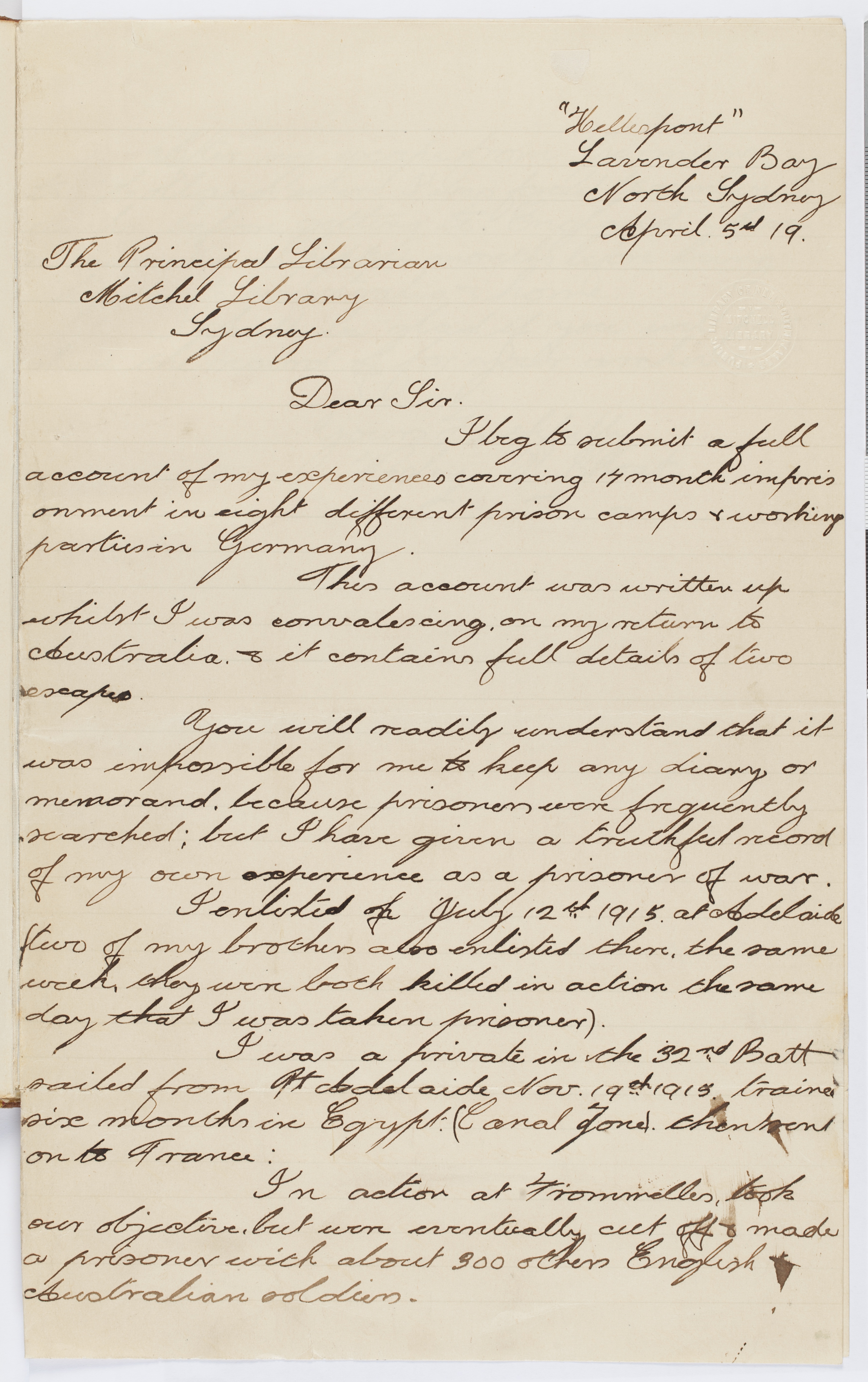
Choat was a private in the 32nd Battalion and was taken prisoner during the Battle of Fromelles. He was a prisoner of war until October 1917 when he escaped.

Colley-Priest was a stretcher-bearer with the 8th Field Ambulance.
Harris was a private in the 55th Battalion.
Clarke was the Company Sergeant Major, Australian Army Service Corps, 4th Divisional Train.
Wilshire served as Captain in C Company, 22nd Battalion at Pozières. He was then promoted to Major and then to Lieutenant Colonel.
Compton served in the 13th Battalion, 4th Reinforcement at Gallipoli and in France. On 11 April 1917, he was captured by the Germans at Bullecourt.
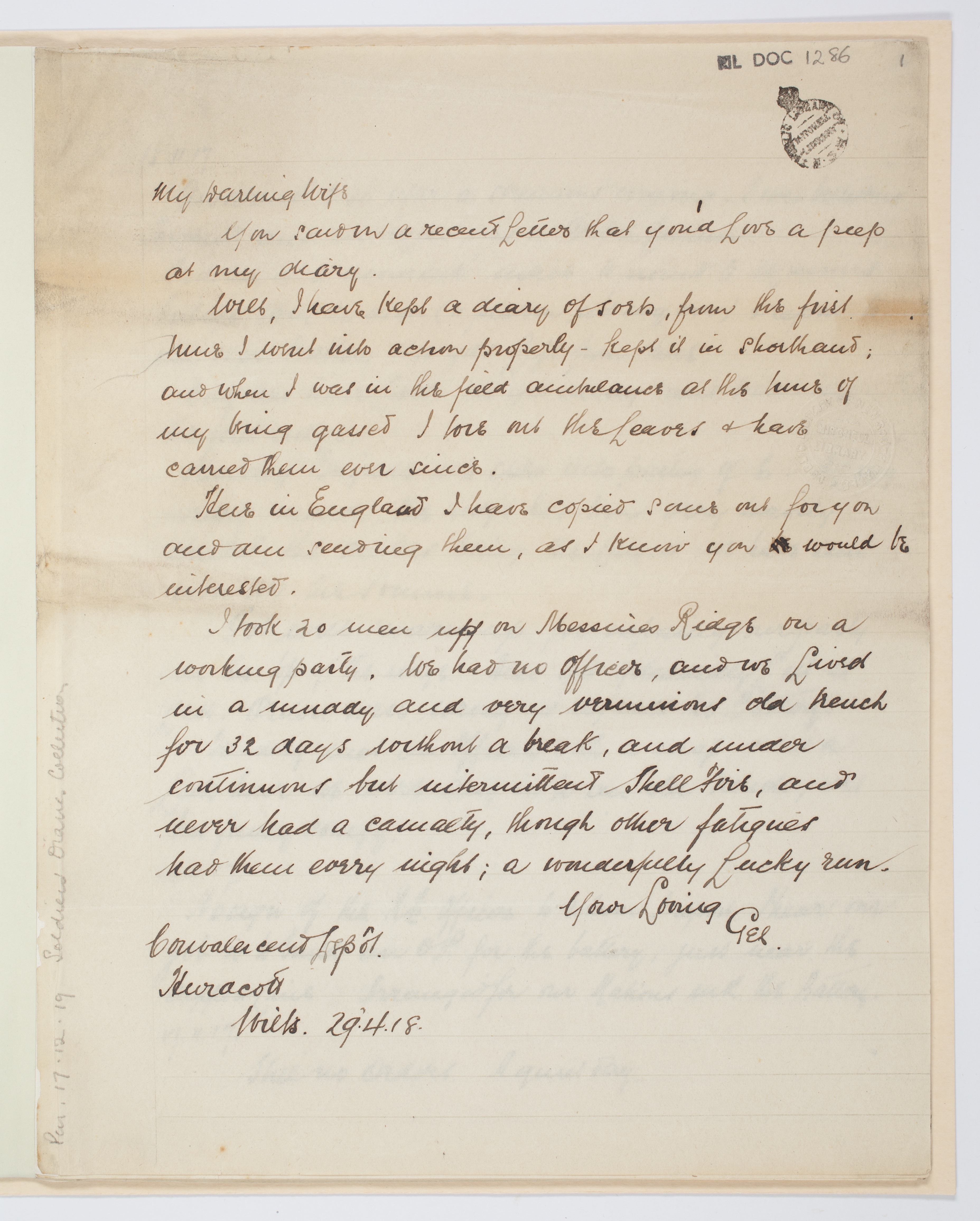
Balme was the Sergeant 29th Battalion, 10th Reinforcement, in charge of a working party on Messines Ridge, Belgium.
Lindsell served in the 14th Machine Gun Company. He was wounded three times: 21 August 1915 in Gallipoli, 15 May 1917 near Bullecourt in France and 26 September 1917 at Polygon Wood in Belgium.
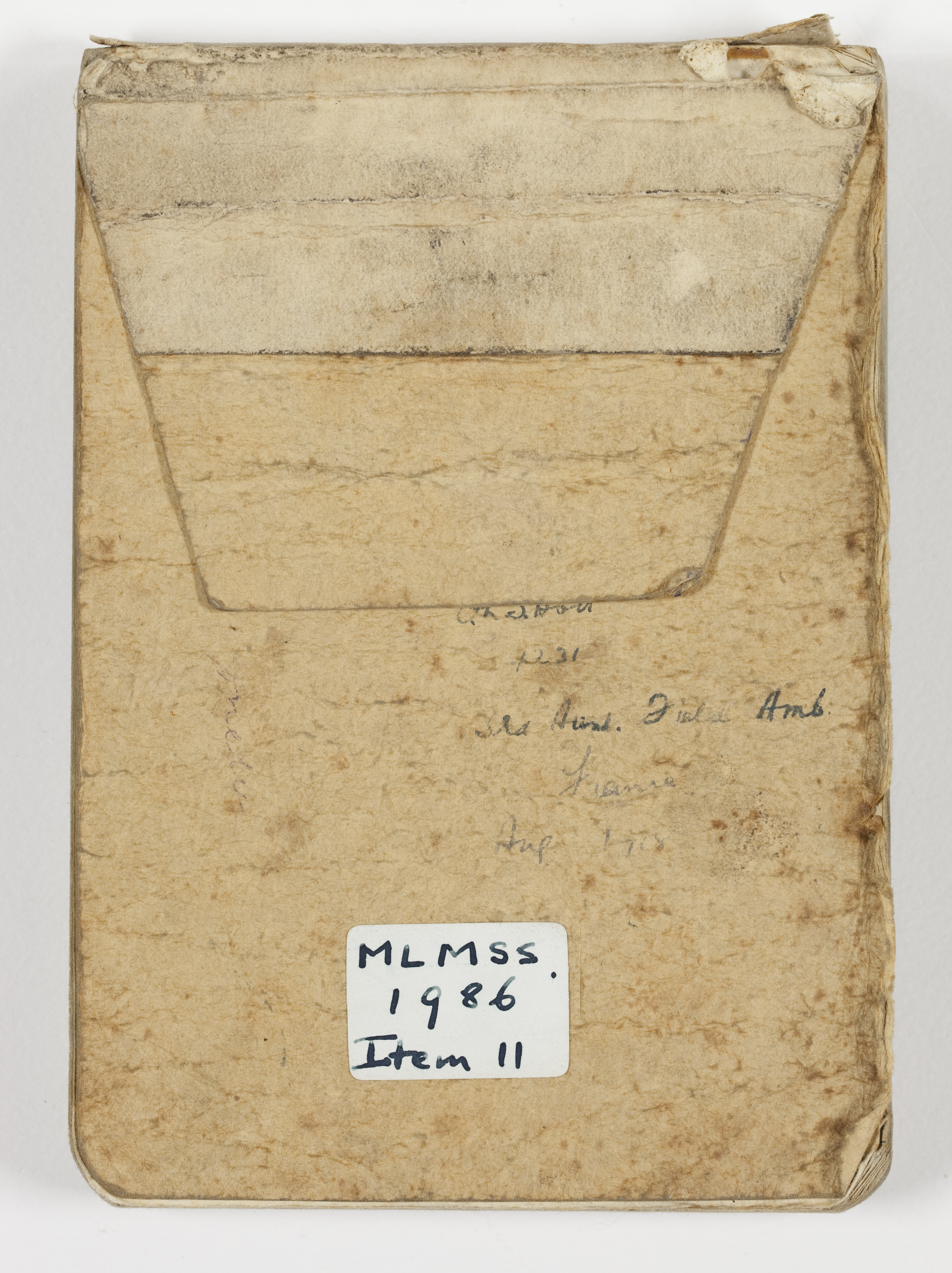
Holt was a Lance Corporal in the 3rd Australian Field Ambulance.
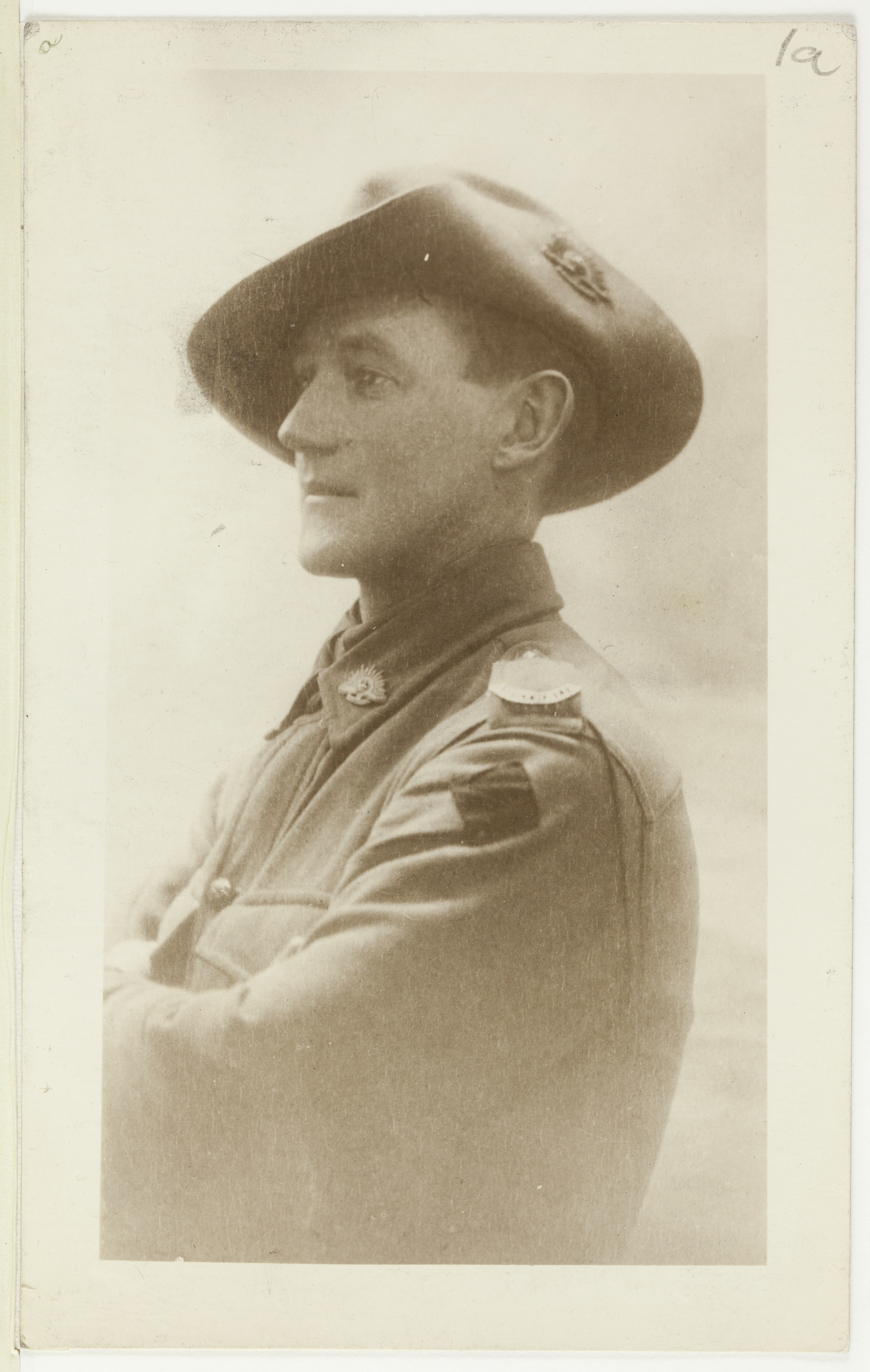
Roberts served in the 21st Battalion, 6th Brigade, 2nd Division. He was killed in the attack on Mont St Quentin, France on 1 September 1918.
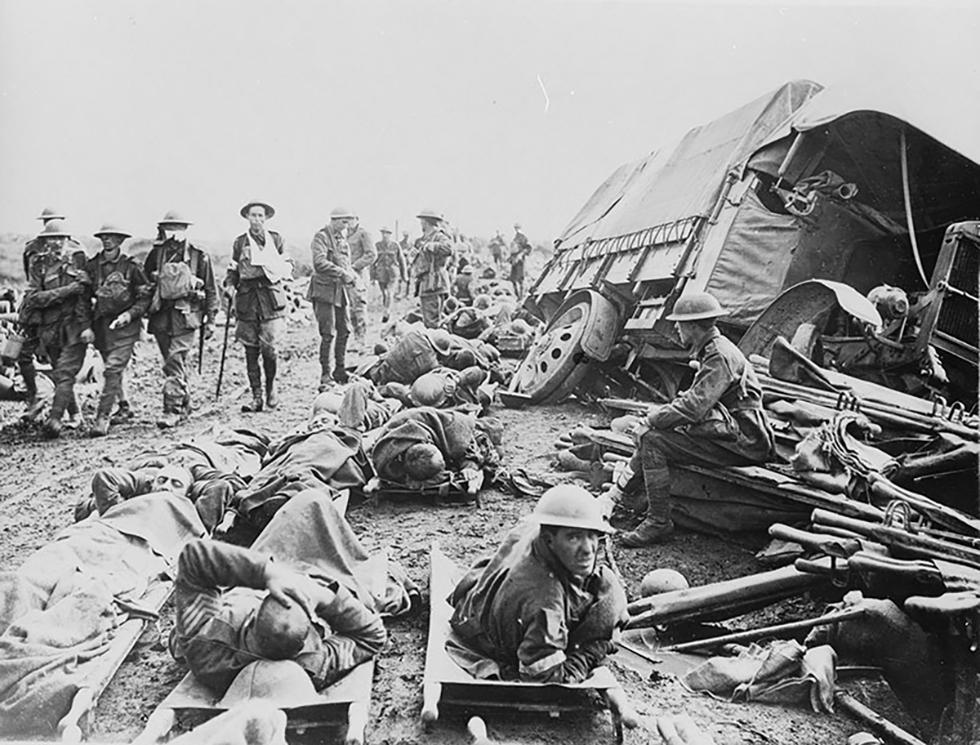
In this image, wounded soldiers wait on stretchers to be transported to the Casualty Clearing Station while those able to walk travel on foot. Soon after this photograph was taken a shell landed nearby, killing most of the wounded on the stretchers.

This lantern slide is from a collection illustrating the work of the Imperial War Graves Commission, the precursor to the Commonwealth War Graves Commission. Battlefield maps would have assisted the Commission in finding the remains of the men and women of the Commonwealth forces who died while on active service.
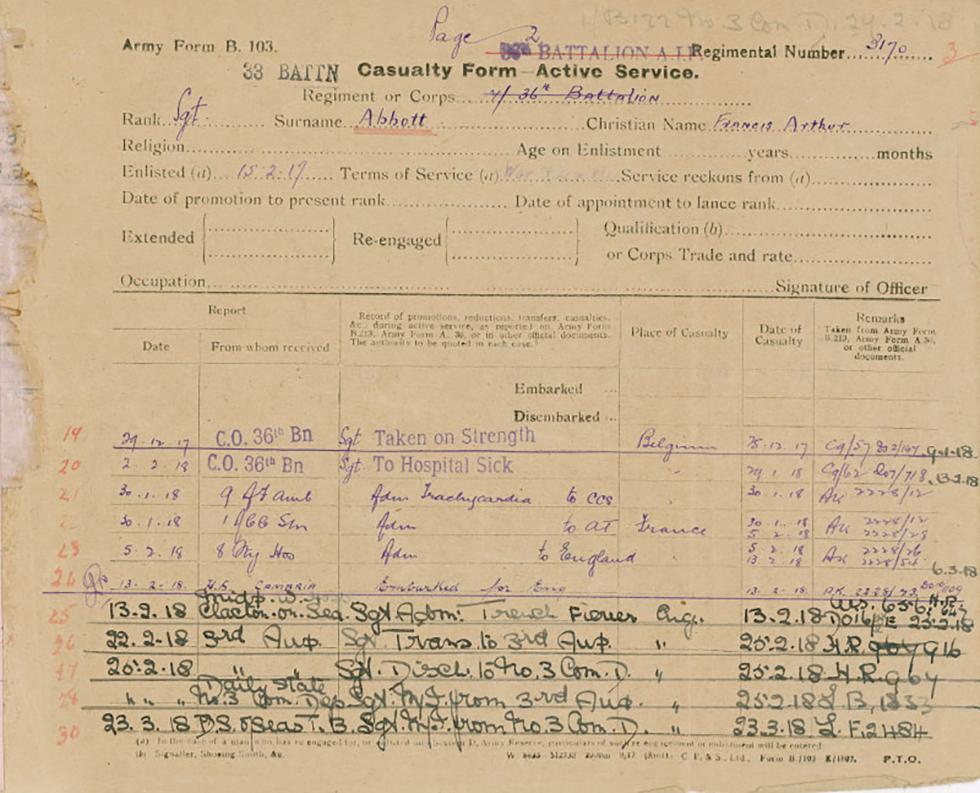
Known as ‘Form B103’, the Casualty Form—Active Service was used to record an enlisted person’s movements and transfers between units; promotions; injuries; and treatment received. Abbreviations were often used to record this information.
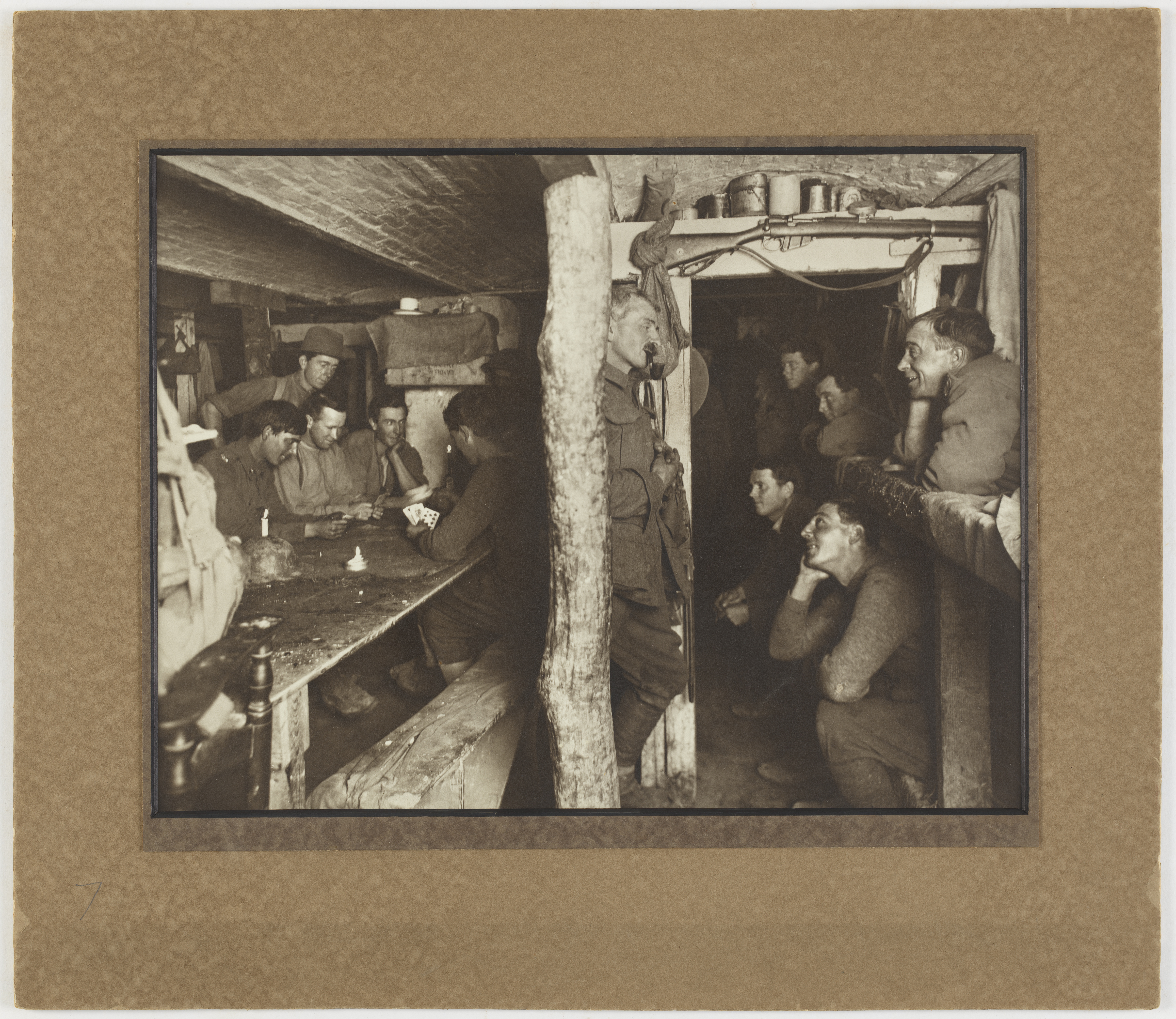
Owing to incessant bombing and shelling it was impossible to live above ground.
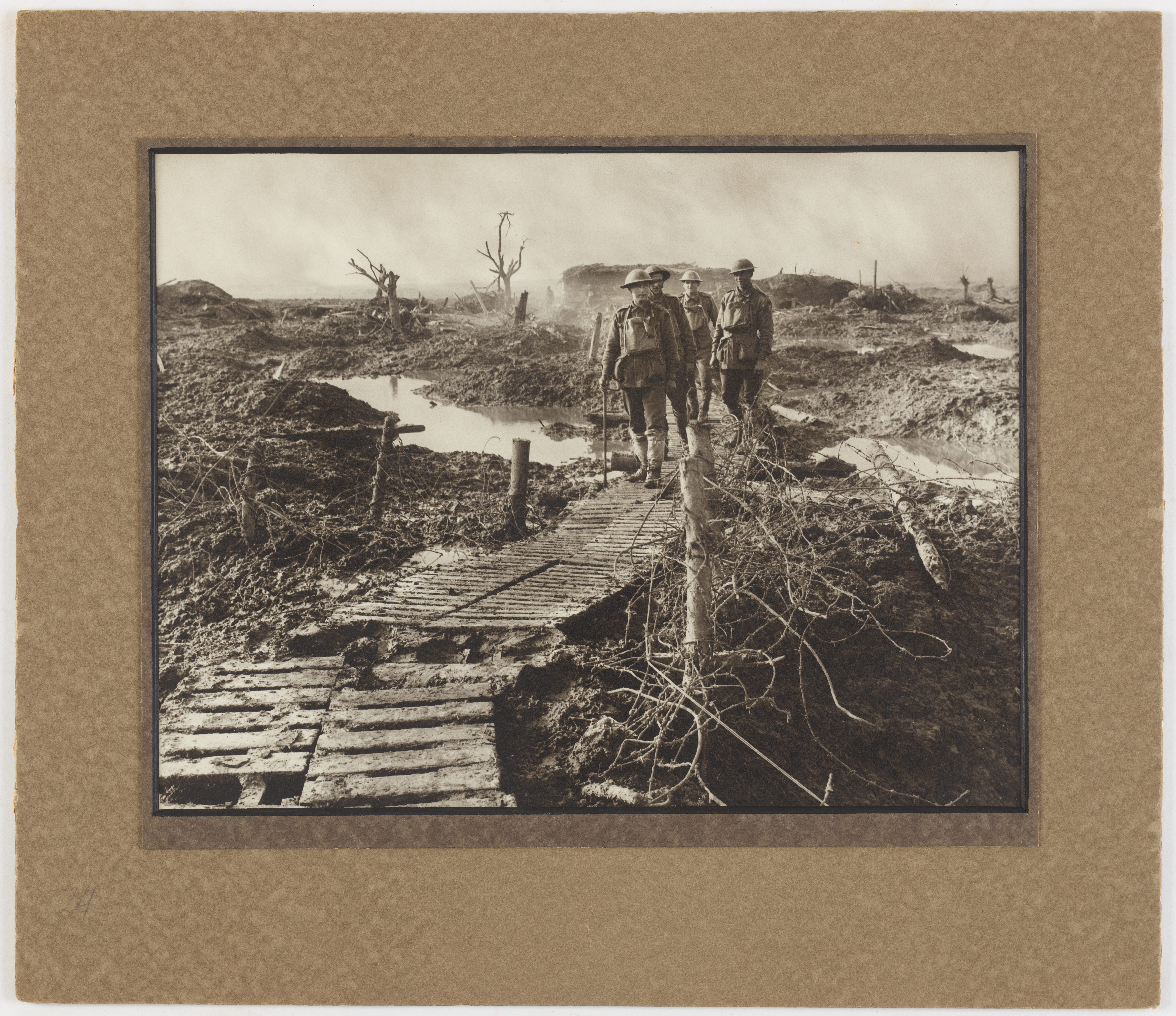
During rains it was only by means of the duckboards that this awful shell-torn quagmire could be crossed. In the foreground stands a remnant of the old Boche front line entanglements.

Brigadier-General John Vaughan Campbell VC addressing men of the 137th Brigade (46th Division) on the Riqueval Bridge over the St. Quentin Canal (part of the German's Hindenburg Line) which they crossed on 29 September 1918.


 Australia and the First World War, 1914-18
by
Australia and the First World War, 1914-18
by
 Australians on the Western Front
by
Australians on the Western Front
by
 Victory on the western front : the decisive battles of World War One
by
Victory on the western front : the decisive battles of World War One
by
 Fromelles : Australia's bloodiest day at war
by
Fromelles : Australia's bloodiest day at war
by
 Frightful first World War
by
Frightful first World War
by